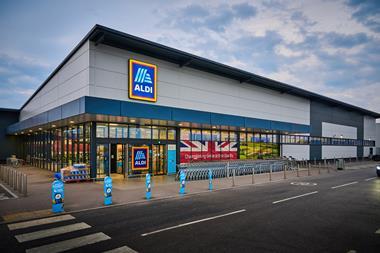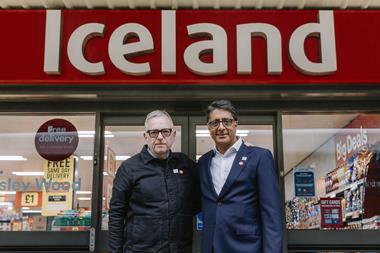Ever since supermarkets were first invented, they have grown larger and more all-encompassing.
“I remember shocking the previous generation by saying I didn’t want anything less than 15,000 sq ft,” Sainsbury’s legendary CEO Lord Sainsbury of Preston Candover recalled to me in an interview for our commemorative 150th anniversary edition. By the time he announced his retirement (20 years ago this week), “the average store size was 30,000 sq ft. Now it has to be 70,000,” he added.
Well. Does it? Have we reached that historic moment in time when supermarkets start to shrink in size? Morrisons CEO Dalton Philips certainly thinks so. Earlier this year he described the hypermarket (definition: >60,000 sq ft) as “a blip in the pages of retail history”. Tesco’s Philip Clarke followed this by calling a halt to its deployment of hypermarkets across the country. And these developments followed arguably the biggest strategic volte-face of all, in 2010, when Asda snapped up Netto.
This week we publish extracts from The Grocery Retail Structure 2012 (digital subscribers can access the full results free of charge). In the case of Sainsbury’s, it’s clear that current CEO Justin King shares Lord Sainsbury’s viewpoint: it was the only supermarket to significantly increase the number of hypermarkets in its store estate (due to a reclassification, the number of Asda and Morrisons hypermarkets actually declined) and in our analysis he argues passionately that the hypermarket still has a future -provided the mix is right.
But with the space race slowing, attention is turning elsewhere: right now, extensions and mezzanines are the supermarket equivalent of new kitchens and loft conversions in the domestic housing market, as the cost of new builds/moving house has become both too risky and too expensive. As a result, the fastest growing format is the superstore, up 13.5%.
Then there’s the well-documented rise in convenience. You can argue all you like about the size of a c-store (one defintion we heard was 3,014 sq ft!). But though statistically, it will take a lot more c-stores before the average size of a supermarket falls, the direction of travel is most definitely smaller. Ever since supermarkets were first invented, they have grown larger and more all-encompassing.
“I remember shocking the previous generation by saying I didn’t want anything less than 15,000 sq ft,” Sainsbury’s legendary CEO Lord Sainsbury of Preston Candover recalled to me in an interview for our commemorative 150th anniversary edition. By the time he announced his retirement (20 years ago this week), “the average store size was 30,000 sq ft. Now it has to be 70,000,” he added.
Well. Does it? Have we reached that historic moment in time when supermarkets start to shrink in size? Morrisons CEO Dalton Philips certainly thinks so. Earlier this year he described the hypermarket (definition: >60,000 sq ft) as “a blip in the pages of retail history”. Tesco’s Philip Clarke followed this by calling a halt to its deployment of hypermarkets across the country. And these developments followed arguably the biggest strategic volte-face of all, in 2010, when Asda snapped up Netto.
This week we publish extracts from The Grocery Retail Structure 2012 (digital subscribers can access the full results free of charge). In the case of Sainsbury’s, it’s clear that current CEO Justin King shares Lord Sainsbury’s viewpoint: it was the only supermarket to significantly increase the number of hypermarkets in its store estate (due to a reclassification, the number of Asda and Morrisons hypermarkets actually declined) and in our analysis on p14 he argues passionately that the hypermarket still has a future -provided the mix is right.
But with the space race slowing, attention is turning elsewhere: right now, extensions and mezzanines are the supermarket equivalent of new kitchens and loft conversions in the domestic housing market, as the cost of new builds/moving house has become both too risky and too expensive. As a result, the fastest growing format is the superstore, up 13.5%.
Then there’s the well-documented rise in convenience. You can argue all you like about the size of a c-store (one defintion we heard was 3,014 sq ft!). But though statistically, it will take a lot more c-stores before the average size of a supermarket falls, the direction of travel is most definitely smaller.


















1 Readers' comment